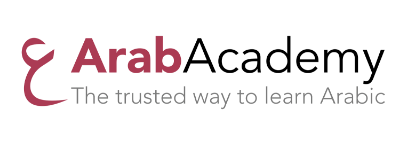The Arabic alphabet has 28 letters and does not have uppercase or lowercase letters. Arab Academy offers online classes for adults and teens to learn how to read, write, and speak the Arabic language. Courses include Modern Standard Arabic, which is used in formal settings and written documents. Here are some things to know about Arabic letters when reading and writing:
Letter Forms
In Arabic script, the letters are joined together, similar to cursive writing. A letter’s form can change shape depending on where it is placed within a word. Some forms include:
- Isolated forms: Isolated forms are the standalone letters of the alphabet.
- Initial forms: Initial forms appear at the beginning of a word and mark the transition between words.
- Medial forms: These are used in the middle of the word, and they help with the flow of the letters.
- Final forms: The writer uses a final form at the end of a word to create a conclusion.
These forms help with legibility and speed when writing the Arabic language. Introductory courses for Modern Standard Arabic teach students to identify the different forms. This is one of the initial steps when learning how to read Arabic.
Written Arabic also includes ligatures. Ligatures are unique to the Arabic language and refer to a design created when letters align to create a unified form. This is an advanced skill that allows students to improve their ability to write Arabic.
No Vowels
In written Arabic, there are only consonant letters. There are no vowels. In written works intended to be read aloud, vowel marks can be added to words. Vowel marks are a type of diacritics, which are marks added to words to indicate different pronunciations. The tashkeel are the diacritics for vowel sounds. The marks include fathah, kasrah, and dammah to create short “a,” “i,” and “u” sounds. For a longer vowel sound, the speaker or writer adds a specific letter after the mark. Sukoon is voweless and means that there is no sound after the consonant.
Right to Left
In line with historical tradition and the influence of the Aramaic and Hebrew languages, Arabic is read and written from right to left. When reading out loud, the speaker also pronounces words right to left, saying the first letter of a word first. Practice right-to-left reading to help your eyes become adjusted to moving in a new direction. You can also trace the different letters of the alphabet to get used to the forms and right-to-left writing.
Arabic Language Classes at Arab Academy
Instructors at Arab Academy provide you with tools to help you memorize Arabic letters and learn their forms. We offer Modern Standard Arabic classes for beginning, intermediate, and advanced Arabic students. We also provide courses in Egyptian Colloquial Arabic, a spoken dialect. A free lesson is available to new students to make sure our courses are a good match. Our immersion program gives students the opportunity to practice reading and speaking Arabic in Cairo. To begin learning Arabic, sign up for one of our courses today.







